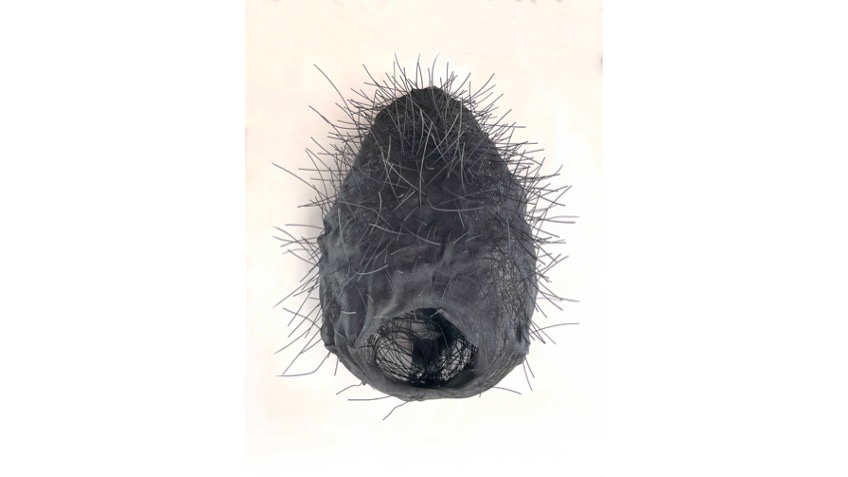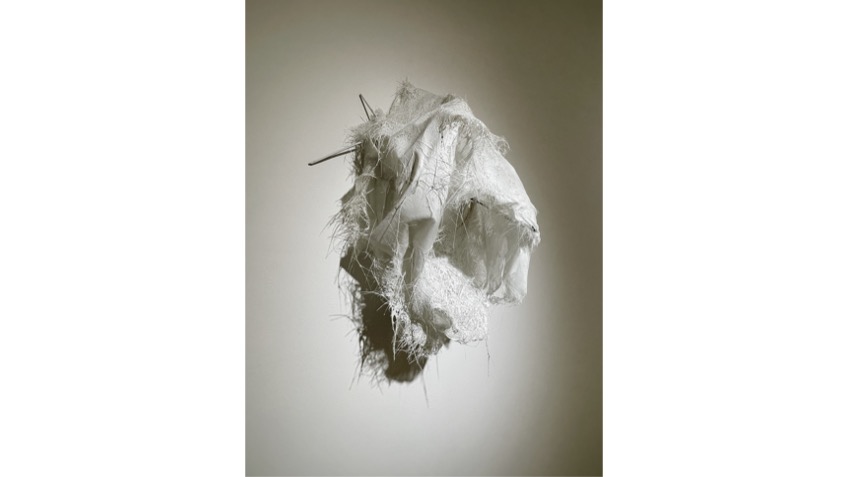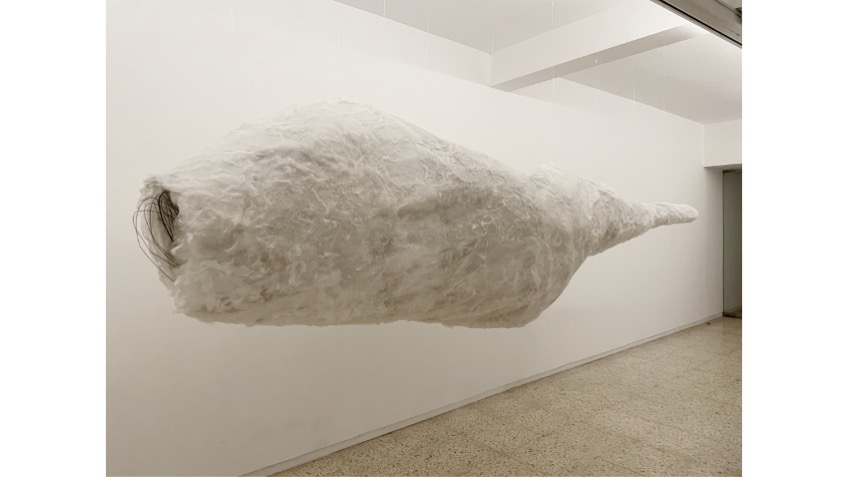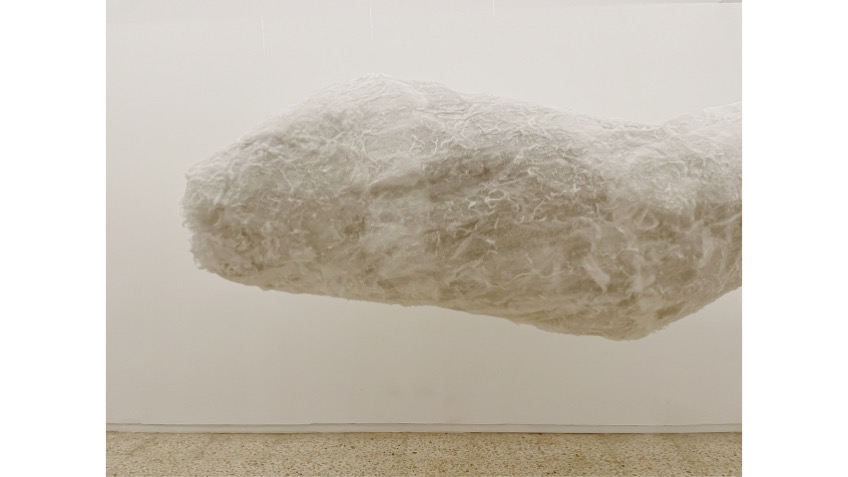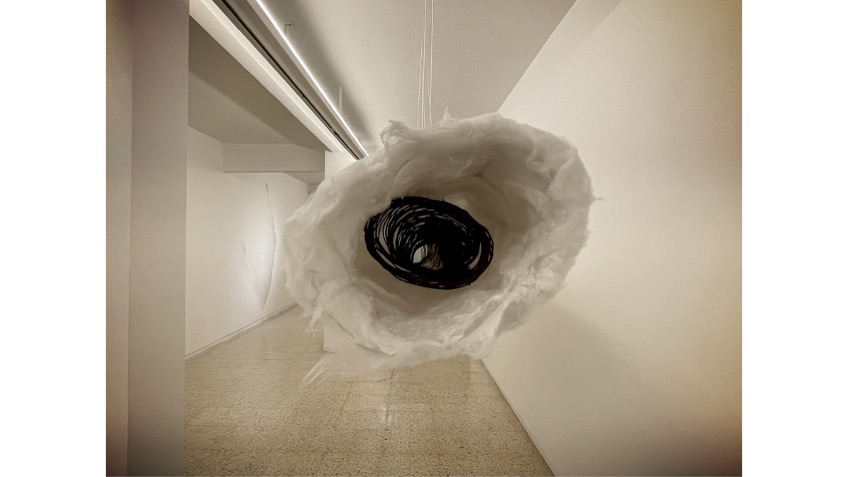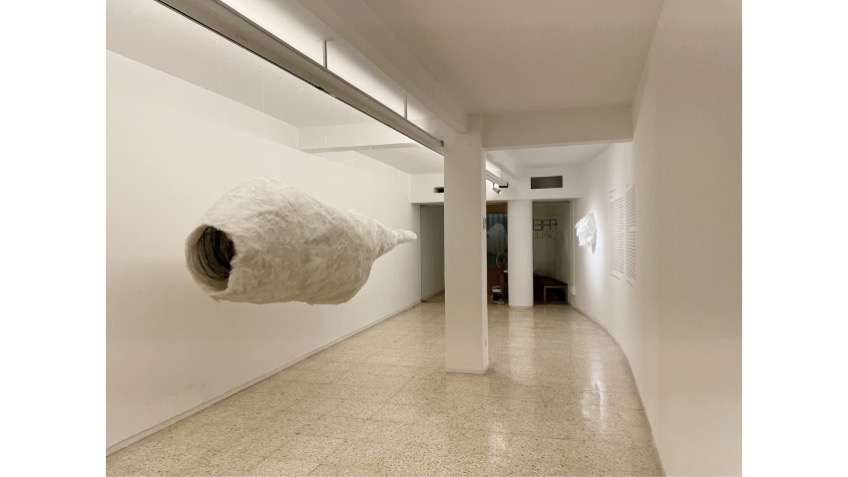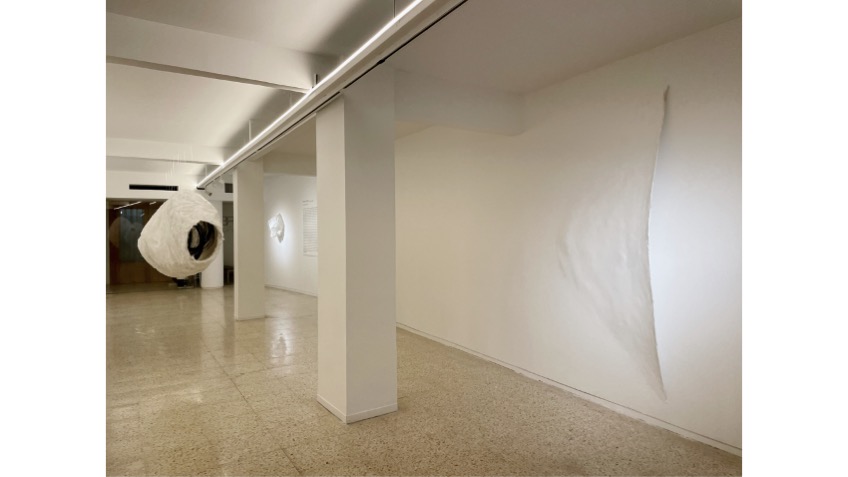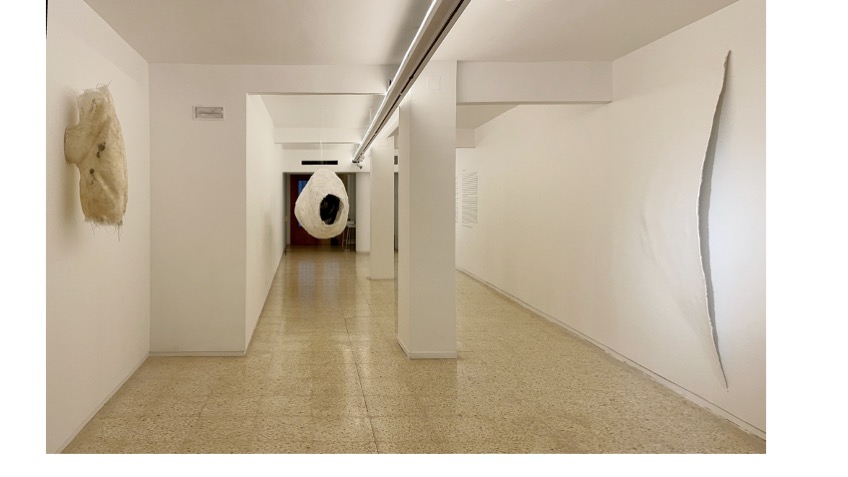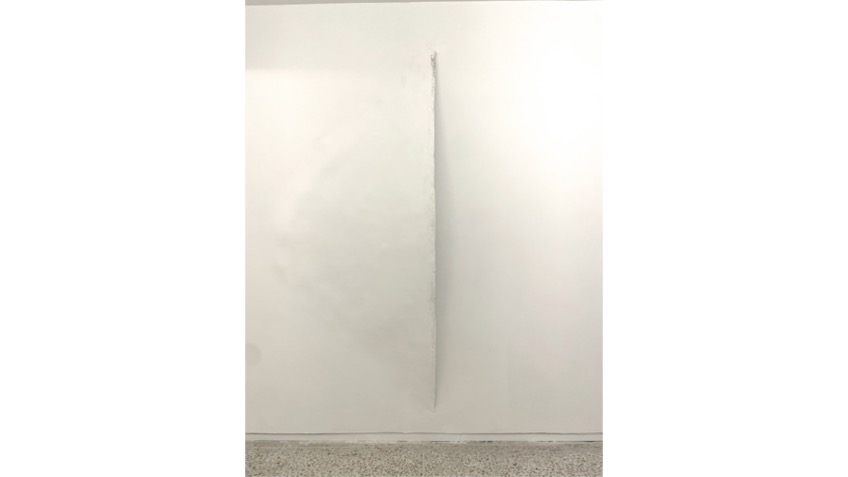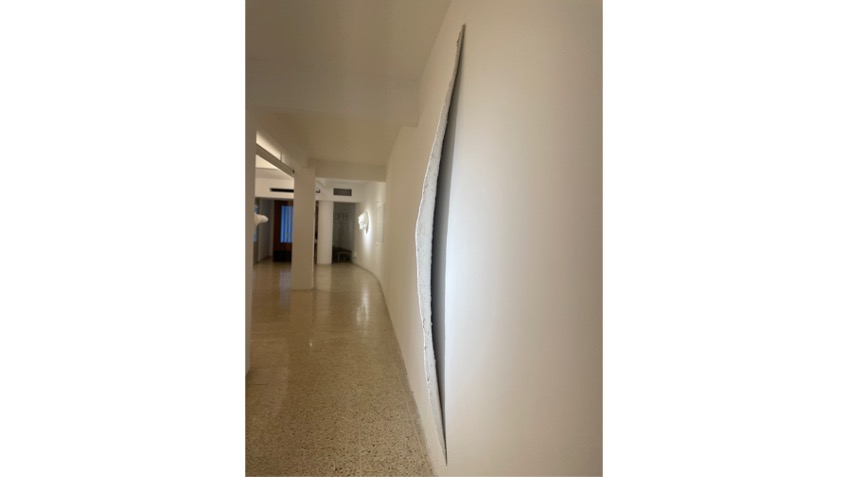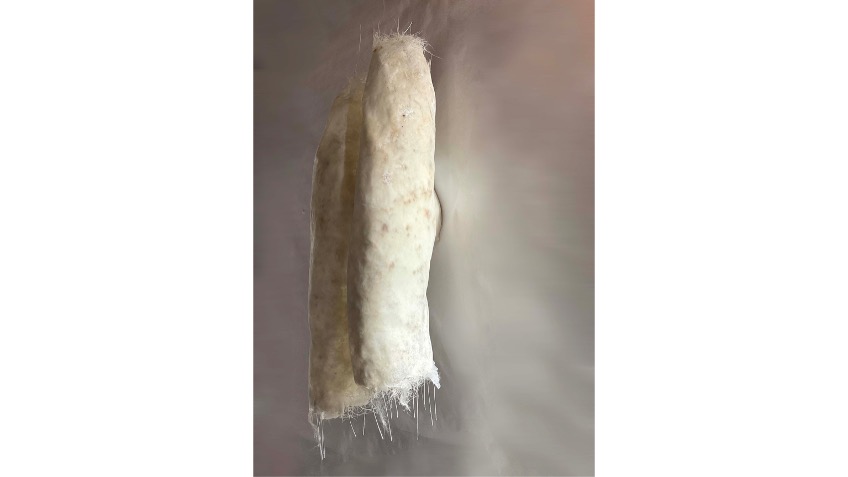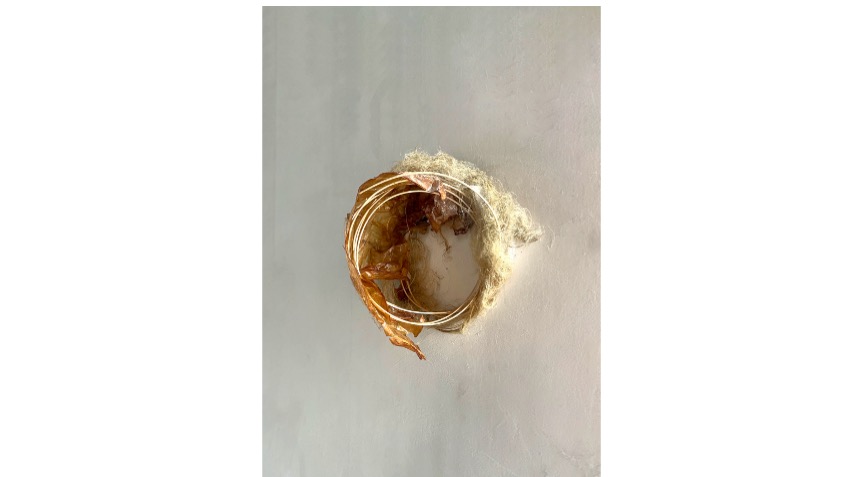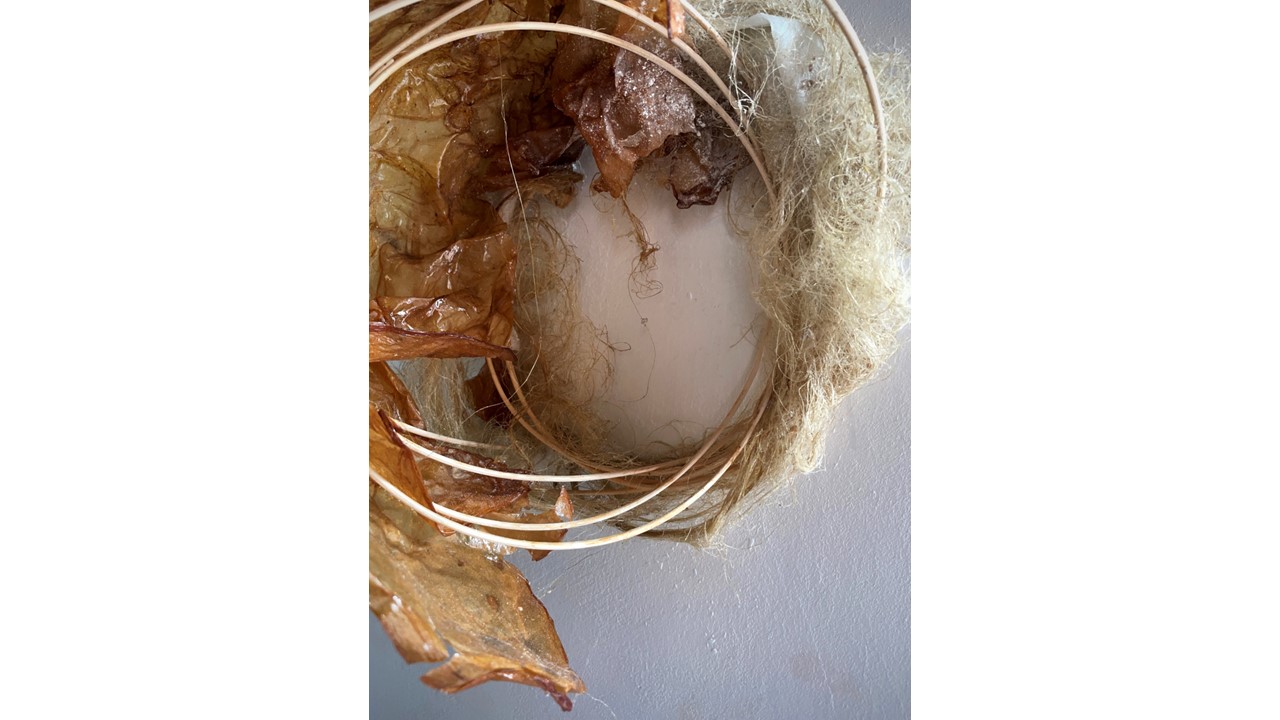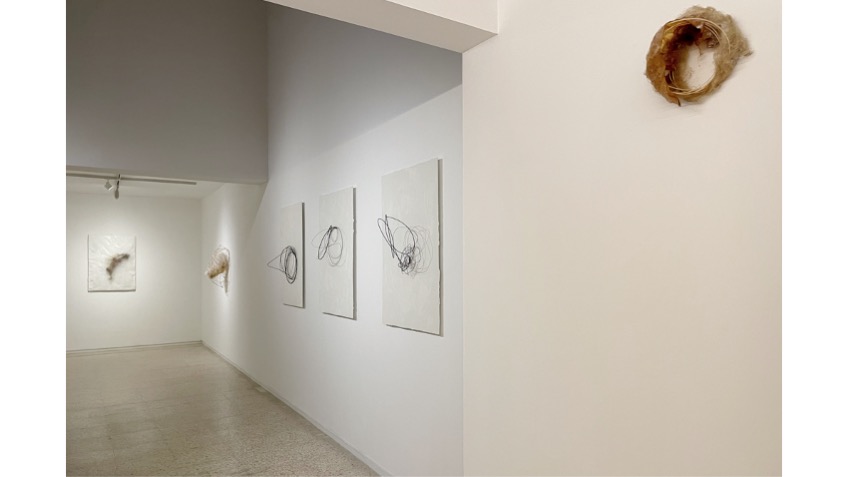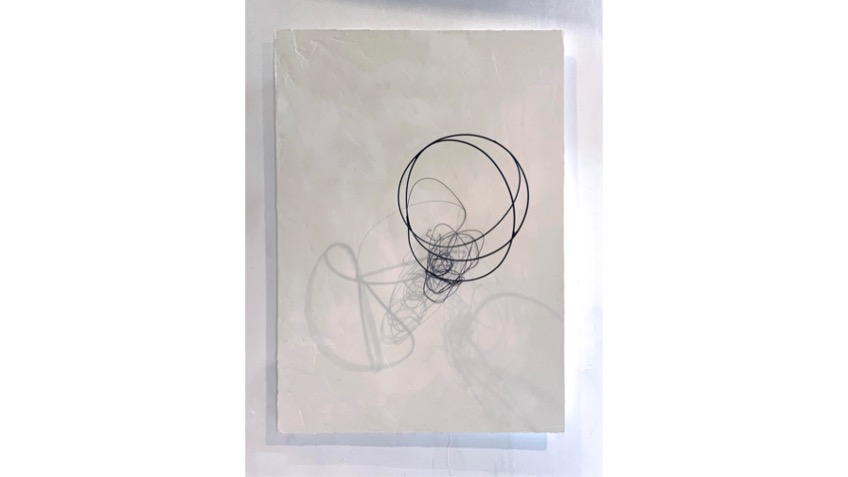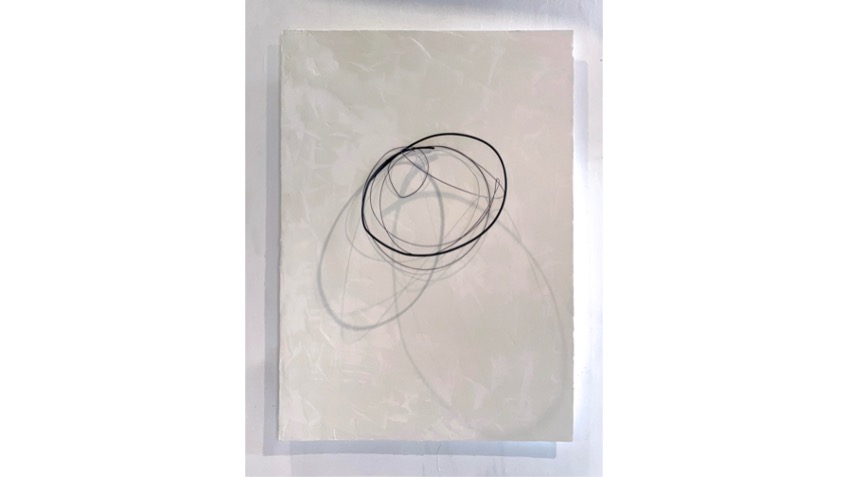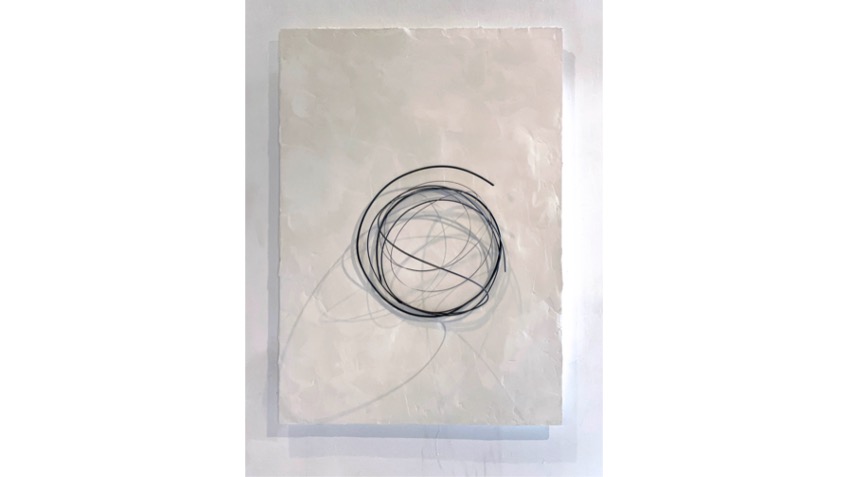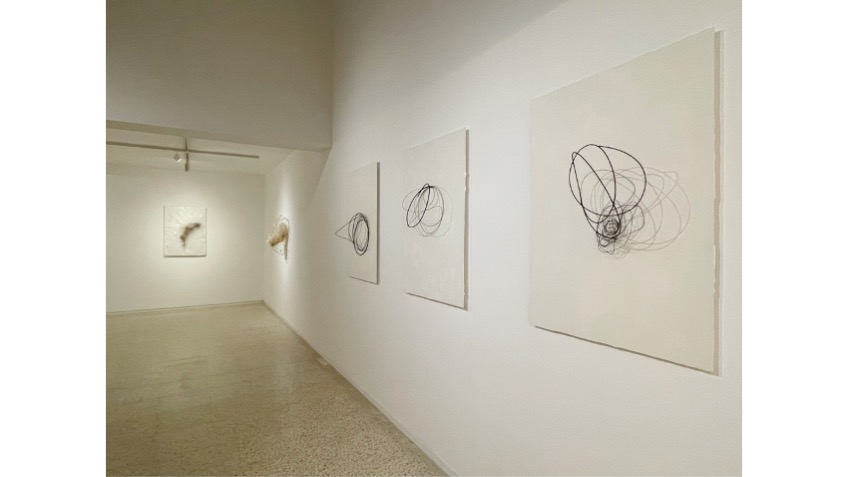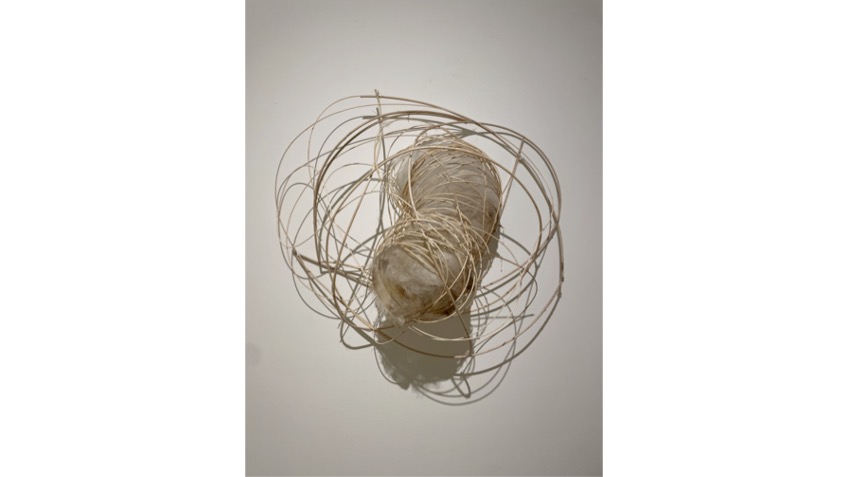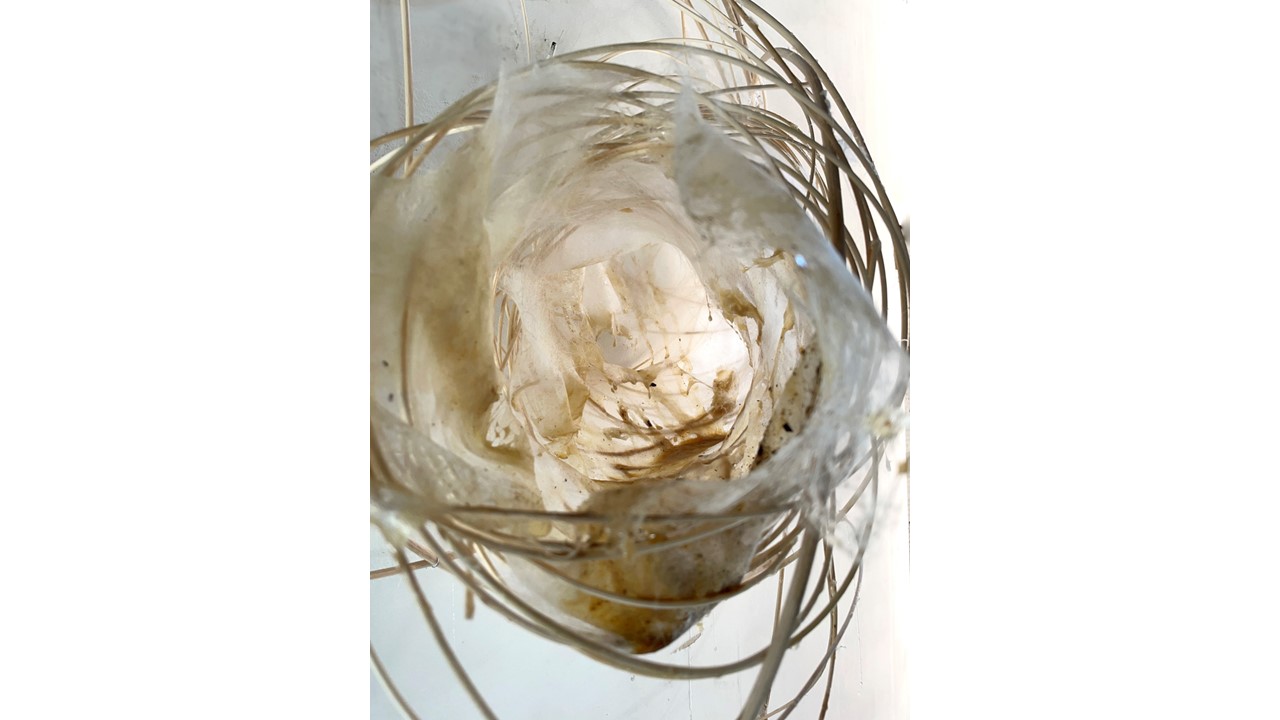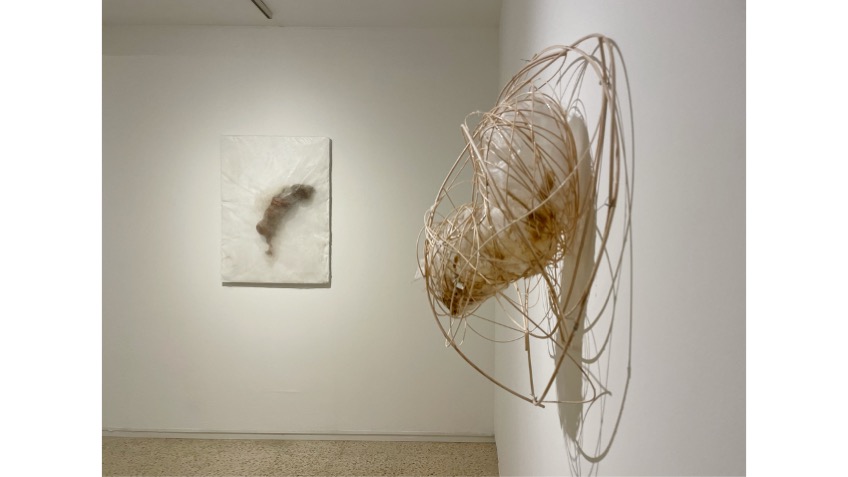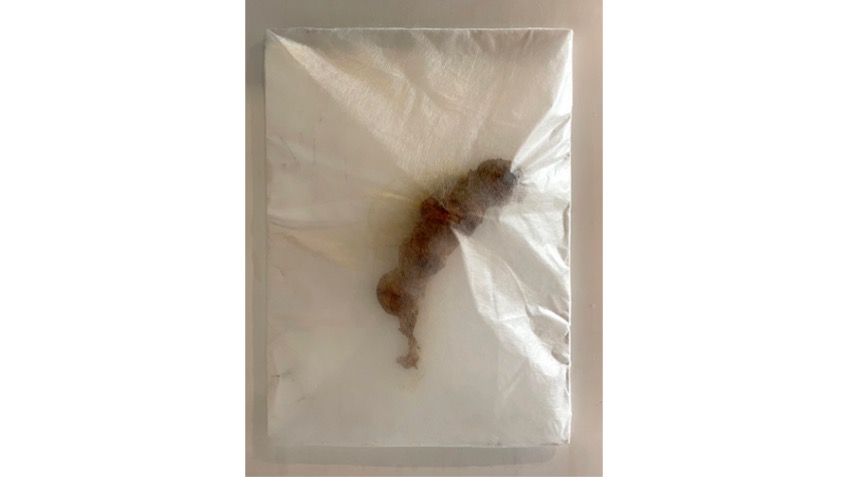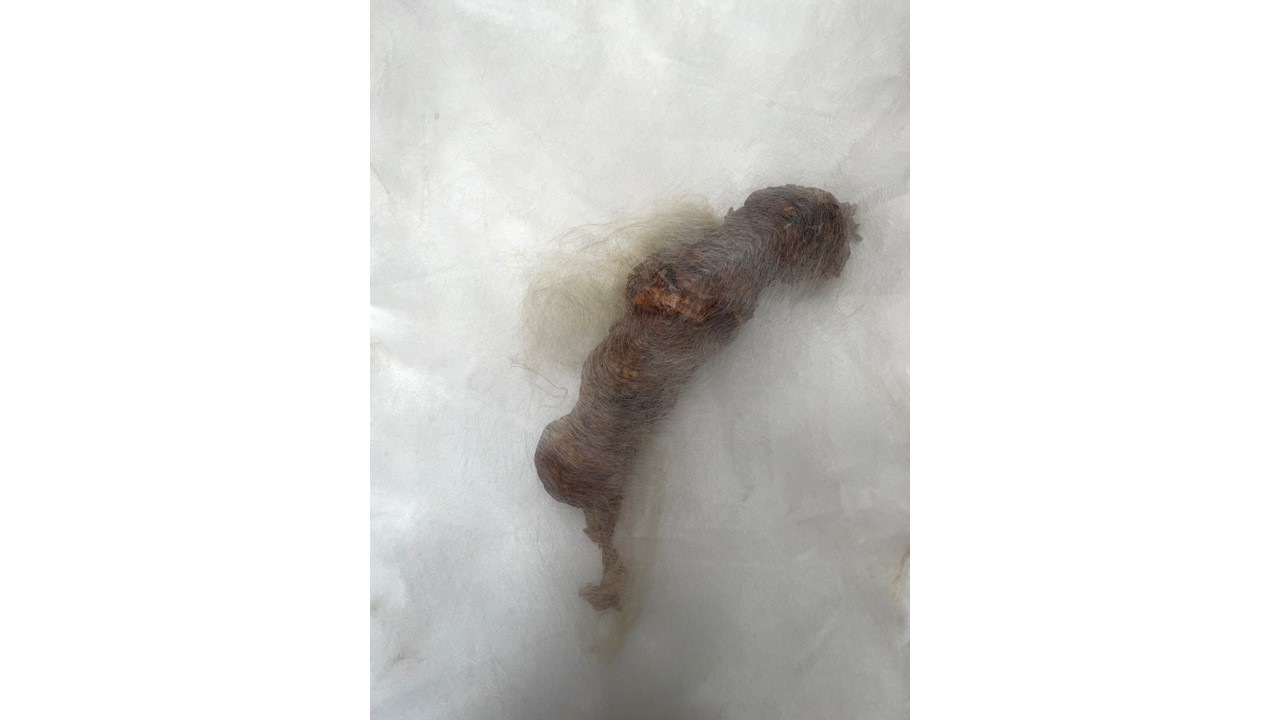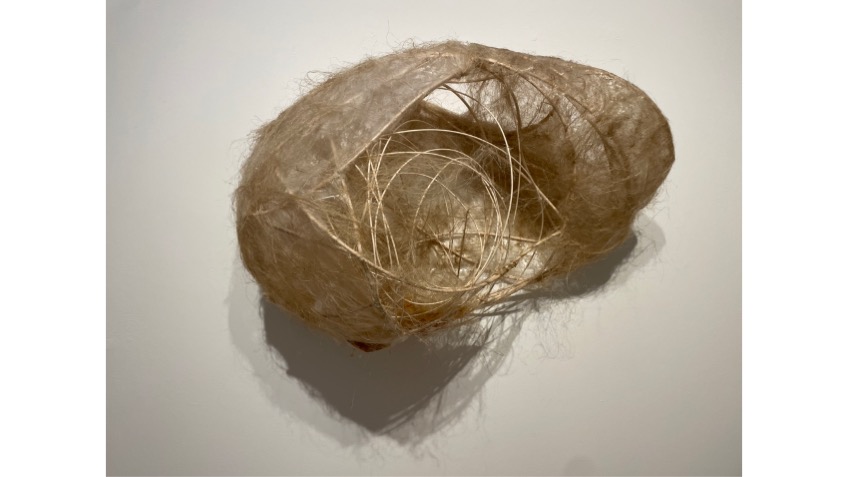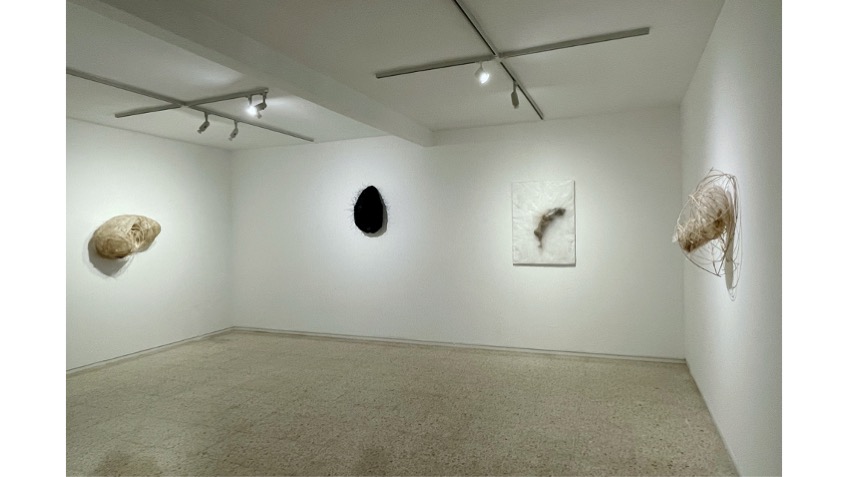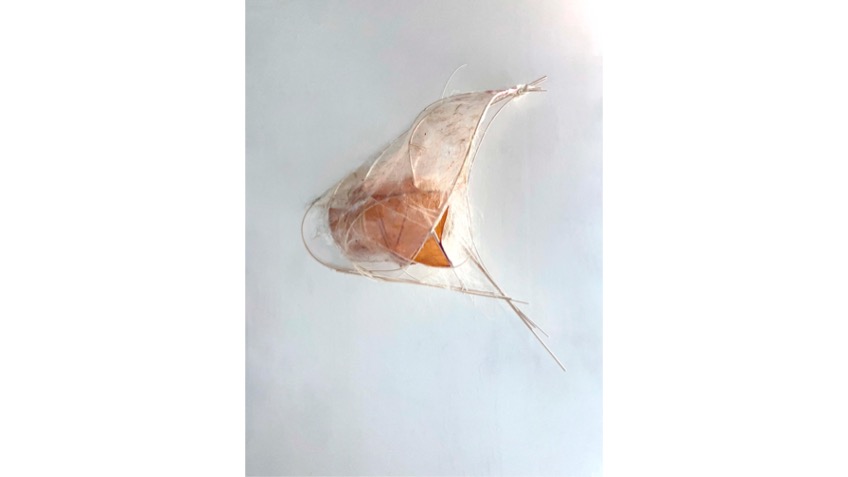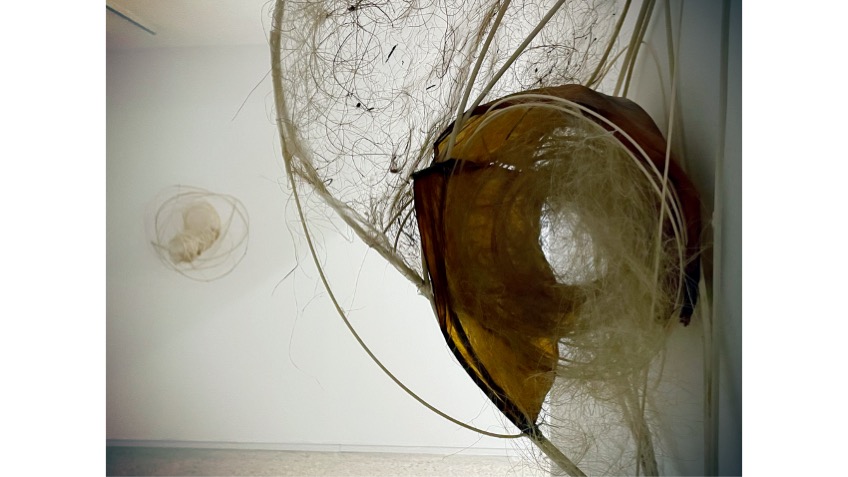The Breathing Skin
Nacho Carbó
from January 9, 2024 to February 23, 2024
The exhibition The Breathing Skin is Nacho Carbó's second individual exhibition at Galería Freijo. On this occasion the artist has experimented with biomaterials, biological materials manipulated in the workshop where process and time are key. Carbó's intention is to offer a reflection on ecology and living spaces. Follows a text, written by the artist himself, that explains this new stage of his work:
We live in turbulent and uncertain times; we are immersed in a paradigm shift that challenges us with doubts and questions which are, at the same time, tremendously stimulating. We must rethink our place in the world and our relationship with our surroundings in a way that can no longer be postponed. In this task of conceiving and building up this new relationship with the environment, art and architecture will undoubtedly have a decisive role. We human beings can no longer see ourselves as alien to - much less to be superior to - the other living beings that shape and mould the human habitat.
What we, human beings, have agreed to call architecture and that shapes our living spaces, the landscape of our emotions, can no longer look condescendingly at nature. On the contrary, we need to observe it carefully in order to extract lessons and instruments that will allow us to place ourselves in the world in a different and new way One that will teach us to respect the other and to look at ourselves in a more holistic way.
From my point of view, in order to renew our view of nature by trying to generate these new interweaving’s, it is particularly relevant today to pay special attention to the process rather than to the resulting form. Or more appropriately, to understand the final form no longer as a result of the process but as part of it; as suspended time. For, indeed, living organisms, regardless of their level of complexity, have for millions of years been generating and constructing their own habitats, their own shelters, through mathematical processes of an organic and structural nature, whose fascinating and ever elusive complexity we are now beginning to unravel, and which are at the origin of the beauty and surprise that these organisms produce in us.
The works that make up the project The Breathing Skin are an approach to these processes; to these organisms and these architectures that cannot be understood in a clear and disciplinary way, as they have discontinuities and superimpositions and are shaped by interstices, folds and fissures. This exhibition comprises works constructed with longings and emotions, joys and disappointments. Spaces that in their complexity speak to us of a world that leaves us with more doubts than certainties, where process and materiality, time and matter are inseparable parts of the generation of form. They are works conceived and generated from the process and from materiality, they are the fruit of the times in which we live.
In a world in the midst of a climate crisis, now indisputable, human beings have accelerated research into the possibilities offered by the use of new, more responsible and sustainable materials that may allow us to overcome a growth model based on fossil fuels. A model that has proven to be unsustainable and unsupportive and that is not only depleting the planet's resources and that is in fact already clearly and palpably jeopardising our own survival as a species. In this process of paradigm change in which we are involved, an attentive look at the materials that nature offers us is a fertile field that opens up multiple and fascinating possibilities.
The Breathing Skin is the result of research and experimentation at the workshop with some of these materials. From raffia or reed, which have played a leading role in the development of human culture for hundreds of years, to new biomaterials resulting from cooking and cultivation in the studio, such as biofilms based on cassava starch or biocellulose from the Chinese tea fungus or kombucha.
Reed, and more specifically reed pith, has been a material extracted directly from nature and used for hundreds of years in many different cultures. We have learned, generation after generation, and intuitively, that its properties, such as flexibility and resistance, made it a perfect material for making everyday objects such as baskets, nets or chairs, to mention only the most abundant and recognisable. The properties with which the plant has endowed itself through its own generation and biological development have been decisive for its adaptation to the environment, for its conservation and evolution over time. The different materiality of the different layers, the structure of its fibres, its diameter, its composition... are nothing but the result of the need to comply with certain characteristics and mechanical stresses in order to be resistant to rainfall, prevailing winds, fires, etc... We have also learned, as a species, that its manipulation as a construction material, the way to obtain its best performance, is through humidity and heat. As we can see, the process itself and time, once again, are necessary ingredients of the form.
Another of the materials used to make the works in The Breathing Skin is tow, which is a set of residual fibres resulting from the combing of hemp. This material has also been incorporated in an ambivalent way; either as an element with direct references to shelters and refuges that refer to animal architectures, or as a structural element incorporated into membranes cultivated and generated in the workshop itself. Once again, it is a material of vegetable and biological origin with which, historically, we have carried out tasks as diverse as the caulking of boats or the structural reinforcement of plaster in traditional architectural cladding. The incorporation of hemp fibres into biomembranes allows structural micro-stresses to be transmitted in the same way that, as a traditional and popular construction material, it allowed stresses to be transmitted to plaster thanks to its fibres, generating a resistant construction material where plaster alone was not capable of meeting the mechanical requirements resulting from structural stresses. We could therefore say that in some of the pieces it fulfils this double function, both poetic and structural.
Alongside these more traditional elements of plant origin, new biomaterials are also incorporated into the works, forming not only technical but also conceptual dialogues. Materials such as, for example, bacterial biocellulose membranes, originating from the Chinese fungus or kombucha. A material in the process of research as such that arises from the fermentation of a symbiotic community of bacteria and yeasts. This community is made up of bacteria such as Medusomyces givesi and Bacterium xylinum and yeasts such as Gluconobacter oxydans, Saccharomyces ludwigii and Pichia fermentans (among others); fed during the process with tea and sugars, with the right conditions of humidity, temperature and - again, given the necessary time - allows us to obtain membranes with a great future projection and which, we hope, will make it possible to modify and replace traditional industrial materials which today are increasingly unsustainable.
We also find skin-generating biofilms that wrap strange and enigmatic spaces and interstices created from polylactic acids found in vegetable starches such as those found in corn or the root of the manduca. By testing and experimenting in the workshop, these membranes have been created, resembling plastic but representing an incipient alternative of biological and therefore sustainable origin to this fossil-based material that has become a real nightmare for the ecosystems of the entire planet.
Thus, in the midst of the composition process of The Breathing Skin the workshop tables are also invaded by elements such as coconut fibre, another interesting material that acts as structural reinforcement in some of the pieces and redistributes stresses and tensions; rosin, a pine resin that, when heated and worked, is tremendously suggestive and has an enormous potential; hydrophilic cotton and its references to so many organisms, some of great significance for textile culture, (to which Moripod is clearly indebted and to which it pays tribute in a certain way given the cultural importance it had in the neighbourhood where the workshop is located) or beeswax, whose smell in the midst of the processing and transformation process is highly evocative.
The future will undoubtedly bring exciting and surprising discoveries. The new biomaterials (together with those which, as we have seen, are not so new) will shape our everyday life, in the not-so-distant future, in a very different way yet to be discovered. A close look at this new materiality and this dialogue between science and art is certainly very stimulating.
On Skins, shelters and membranes.
Nacho Carbó, 2023.

